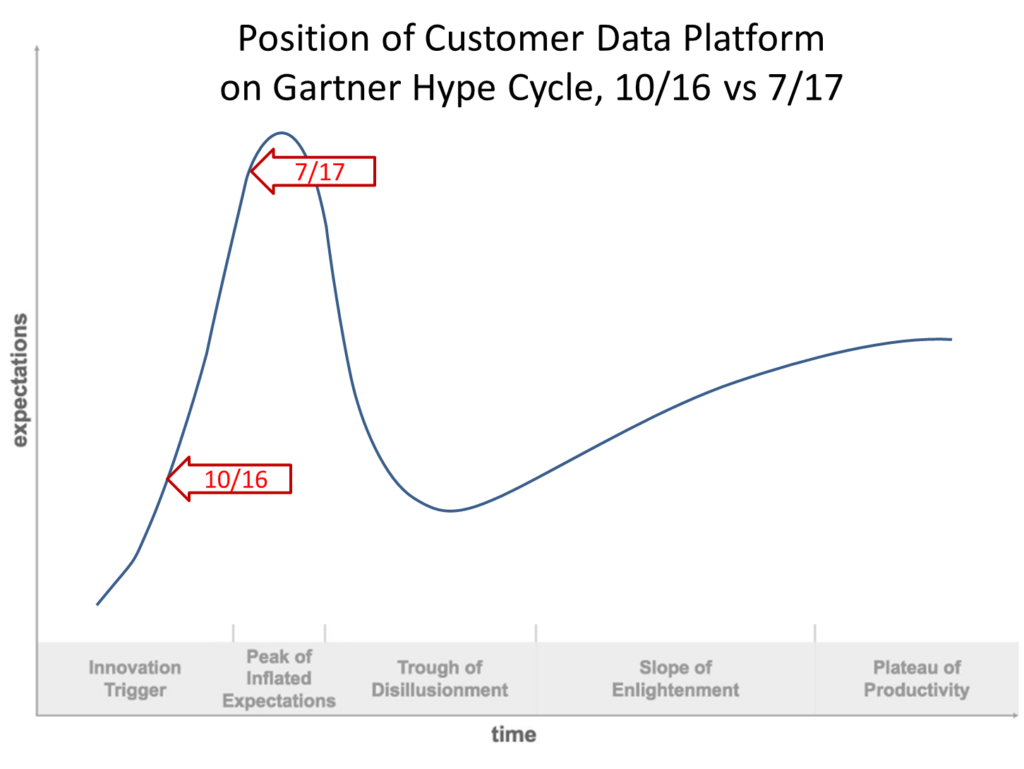How a Customer Data Platform Can Unlock +30% ROI in Paid Search
August 28, 2017The customer journey is becoming increasingly complex – with customers using multiple devices, channels and sessions in their path to purchase. Often, however, information about a customers’ journey is siloed – meaning marketers can only see each of these interactions in isolation, and lack visibility on cross-channel cost and revenue. As a result, they lack the single customer view that is necessary to attribute revenue (and cost) to each step in the customer journey, and struggle to optimise the cost of customer acquisition, retention and lifetime value.
We often find that this problem in greatest in Google – which is rapidly becoming the most powerful digital marketing channel, seeing over 2.3 million searches per day. With all these interactions, marketers are now paying a premium to get their brand noticed, reflected in the fact that pay-per-click advertising has nearly doubled over the past three years.
Customer Data Platforms are the foundation from which marketers can solve the challenges of gaining visibility on their paid search activities, and overcoming the rising costs of customer acquisition and retention in this channel.
1. Data Integration
Many businesses continue to struggle with optimising their marketing campaigns. The simple fact is that they do not have a grasp on their data – and lack the single customer view that is necessary to effective marketing channel attribution.
A Customer Data Platform alleviates this challenge by gathering, integrating and centralising customer data from various sources to provide a single customer view. Data sources are uniquely tagged in order to ensure that customer data is being captured at every possible stage of the customer journey. These sources are then integrated in order to provide a cohesive view of a single customer’s journey to purchase. For instance, website visits, email opens, and app interactions can be integrated with things like paid search costs and revenue.
The result is a stitched customer journey and single customer view that accurately displays a customer’s path to purchase, across a myriad of marketing channels, sessions and devices.
2. Data-driven Attribution
This data forms the basis for data-driven attribution modelling. On a basic level, this model identifies a set of unique user events that contribute to in some manner to a conversion, and assigns an actual, accurate value and cost to each of these events. This means you are able to truly understand the revenue generated from individual channels, and helps marketers understand whether they are acting in a cost effective manner.
Our attribution modelling works within our Customer Data Platform, and calls on the Markov model, which provides the most accurate value for each event through algorithmic probability, and which continuously learns from customers – making it more powerful every day.
With paid search, marketers are often unable to tell which keywords play a role in each step of the customer journey, and which don’t. However, data-driven attribution provides visibility on high and low performing keywords and campaigns. With this knowledge, marketers can cut or reinvest spending from keywords that are not bringing in conversions, and are therefore not showing high ROI. It solves the age old problem of knowing that half of your keywords don’t bring in revenue, but not knowing which. Without the rich, granular data that a Customer Data Platform provides, marketers are making these decisions based on emotion – and therefore risk not making the most optimal choices. Evincing this, we have seen a client make a 30% increase in their ROI by cutting wasteful keywords in this manner.
3. Optimise at Scale
Whilst valuable insights can be gained from using a Customer Data Platform and data-driven, multi-touch attribution, the level of granularity that these systems go into can result in several thousand rows of data being outputted. Whilst all of these contain valuable information about marketing activities, the scale of data can be difficult to manually optimise in real time – that it, it is difficult for a single marketer to employ all of the necessary, ROI boosting changes. Integration with a bid management platform is therefore key to scaling your paid search optimisation. Combining the power of the Customer Data Platform to discover high and low performing keywords, with the automation of bid management platforms, enables spend on poorly performing keywords to be quickly reallocated – automatically optimising your paid search. Alongside this, the need for manual keyword inputs and segmenting is eliminated with this integrated – with the Customer Data Platform acting in real-time in response to customers’ interactions with your keywords.
Future Steps
Once you have taken these steps to optimise your paid search channels, you are left with a Customer Data Platform that is the foundation for broader, cross-channel marketing optimisation. This means that you can begin to tackle other priority channels – to reduce costs and boost ROI – simply by integrating that data source into your Customer Data Platform and applying the same data-driven attribution modelling.


